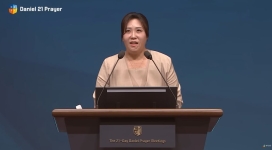
Prescription drug users rose from 51 percent of U.S. adults in 1999 to 59 percent of adults in 2011, according to a new study.
It's hard to say why prescription drug use would be on the rise, said lead author Elizabeth D. Kantor, formerly of the Harvard T.H. Chan School of Public Health in Boston, and now at Memorial Sloan Kettering Cancer Center in New York.
"For example, we know that older adults tend to take more medications than younger adults, and so we'd expect prescription drug use to increase as the U.S. population ages," Kantor told Reuters Health by email.
But "something beyond the aging of the U.S. population appears to be driving the increase in prescription drug use," Kantor said.
Many factors are at play, she said. New drugs enter the market and old drugs lose patent protection and become less costly, she noted. Meanwhile, patterns of prescription drug use evolve with scientific advances and with changes in clinical guidelines and policies regarding drug marketing and promotion.
Kantor's team analyzed responses from seven cycles of the National Health and Nutrition Examination Survey (NHANES) including 37,000 U.S. adults age 20 and older. The surveys included questions about prescription drug use over the previous 30 days.
They report in the Journal of the American Medical Association that the increase in prescription drug use was only significant for people age 40 and older.
As prescription drug use rose overall, so did "polypharmacy," the use of five or more drugs at once, which increased from 8 percent to 15 percent of adults.
Use of blood pressure medications, statins for high cholesterol, and antidepressants all increased over time, as did use of a certain type of stomach acid blocker called proton pump inhibitors.
By 2012, the most common drug was simvastatin (Zocor), a high cholesterol drug being taken by almost eight percent of U.S. adults.
During the decade, guidelines for statins changed to expand the number of patients who should get them, said Glen T. Schumock of The University of Illinois at Chicago, who was not part of the study.
It's hard to say whether the increase in prescription drug use is troubling, Kantor said - as an increase in one class of drug may be meeting the needs of the population in a good way, and an increase in another class may be due to overuse or misuse.
People with health insurance are more likely to report use of prescription drugs, so increased access to prescription drugs under the Affordable Care Act would be expected to increase use, she said.
The sharpest increase for several drug classes happened early in the study period, with the trend less strong in more recent years, so it may be slowing down, Kantor said.
"Even though increased use of some medications are beneficial from a public health perspective, the increased use of polypharmacy needs attention," said Dr. Suzie Bertisch of Beth Israel Deaconess Medical Center in Boston, who was not part of the study. "While multiple medications are indicated in some patients, the potential interactions and adverse effects need to be monitored."







